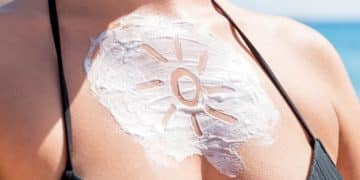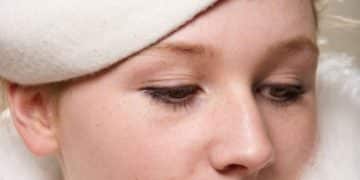Skincare for Men: Top 5 Essentials for a Simple Routine in 2025
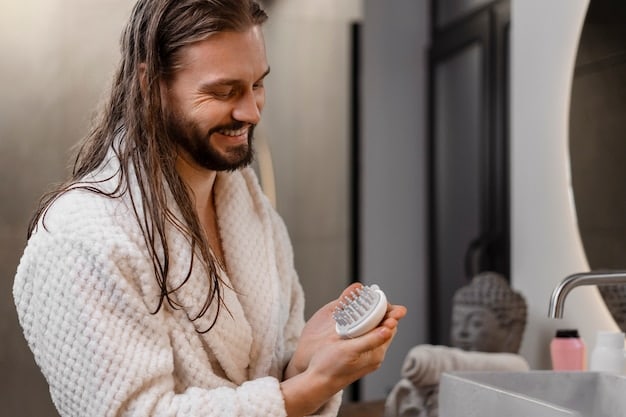
The best skincare routine for men in 2025 includes five essential products: cleanser, exfoliant, moisturizer, sunscreen, and a targeted treatment, selected based on individual skin types and concerns for optimal skin health.
Achieving healthy, clear skin doesn’t have to be complicated. In fact, a simple, effective skincare routine using just a few key products can make a world of difference. Discover the skincare for men: 5 essential products for a simple and effective routine in 2025 to keep your skin looking its best.
The Foundation of Men’s Skincare: Understanding Your Skin
Before diving into the essential products, it’s crucial to understand your skin type. Is it oily, dry, sensitive, or a combination? Knowing this will guide you in choosing the right formulas and ingredients for your needs. Let’s delve deeper into identifying your skin type.
Identifying Your Skin Type
Determining your skin type is the first step toward a successful skincare routine. Different skin types have different needs, and using the wrong products can lead to irritation, breakouts, or other issues. There are several ways to identify your skin type. One common method is the “wait-and-see” approach after cleansing your face.
To accurately assess your skin type, thoroughly cleanse your face with a gentle cleanser and pat it dry. Do not apply any products afterward. Wait approximately 30 minutes to an hour and observe how your skin feels. Note any areas that feel tight, oily, or normal.
- Oily Skin: Your skin feels greasy all over.
- Dry Skin: Your skin feels tight and possibly flaky.
- Combination Skin: Your forehead, nose, and chin (the T-zone) are oily, while the rest of your face is dry or normal.
- Sensitive Skin: Your skin is easily irritated by products and environmental factors.
- Normal Skin: Your skin feels balanced and comfortable.
Once you’ve identified your skin type, you can choose products specifically formulated for your needs. Remember to consider factors like climate, age, and any specific skin concerns you may have. This will help you create a skincare routine that works best for you.
Understanding your skin is the cornerstone of effective skincare. By taking the time to identify your skin type and its unique needs, you’ll be better equipped to choose the right products and create a routine that promotes healthy, radiant skin.
Essential Product 1: Cleanser
A good cleanser is the cornerstone of any skincare routine. It removes dirt, oil, and grime that accumulate throughout the day, preventing clogged pores and breakouts. Choosing the right cleanser for your skin type is essential. Let’s explore the best options.
Selecting a cleanser depends heavily on the type of skin you have. For oily skin, a foaming cleanser with ingredients like salicylic acid can help control oil production. On the other hand, if you have dry skin, a creamy, hydrating cleanser with ingredients like hyaluronic acid or glycerin would be best. Sensitive skin benefits from gentle, fragrance-free cleansers to minimize irritation.
Choosing the Right Cleanser for Your Skin Type
Choosing the right cleanser can be a game-changer for your skin. Understanding your skin’s specific needs and concerns is critical to making the best choice. Here’s how to tailor your cleanser selection to your unique skin type:
- Oily Skin: Opt for foaming cleansers or gel cleansers containing salicylic acid or tea tree oil. These ingredients help remove excess oil and prevent breakouts.
- Dry Skin: Choose creamy, hydrating cleansers with ingredients like hyaluronic acid, glycerin, or ceramides. These will cleanse the skin without stripping it of its natural moisture.
- Sensitive Skin: Look for gentle, fragrance-free cleansers that are labeled as hypoallergenic or dermatologist-tested. Avoid cleansers with harsh chemicals or exfoliants.
- Combination Skin: Consider using a gentle, balanced cleanser that effectively cleanses the skin without over-drying it. You might also spot-treat oily areas with a cleanser designed for oily skin.
Cleansing is a critical step in men’s skincare routine. After cleansing, use serums and moisturizers. Regularly remove dirt and grime to maintain healthier skin.
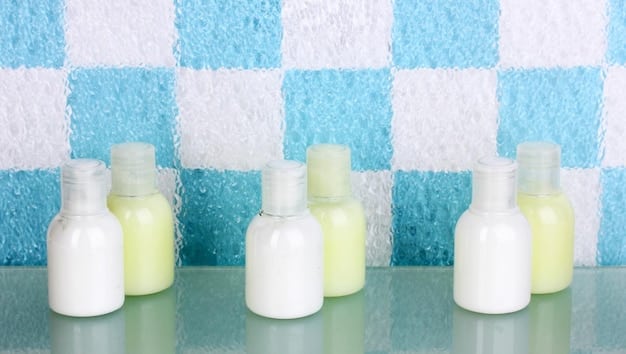
Essential Product 2: Exfoliant
Exfoliation is key to removing dead skin cells, revealing smoother, brighter skin underneath. This step can also help prevent ingrown hairs and improve the absorption of other skincare products. Both physical and chemical exfoliants can be beneficial. Let’s consider each option.
Physical exfoliants, such as scrubs with small beads or grains, can provide immediate results. However, they can be harsh on the skin if used too vigorously. Chemical exfoliants, like AHAs (alpha hydroxy acids) or BHAs (beta hydroxy acids), gently dissolve dead skin cells without physical scrubbing. These are generally milder and more suitable for sensitive skin.
How Often Should You Exfoliate?
Finding the right exfoliation frequency is essential for maintaining healthy skin. Over-exfoliating can lead to irritation, redness, and even damage to the skin’s protective barrier. Under-exfoliating, on the other hand, may result in clogged pores and a dull complexion. Factors of skin type can help in deciding how many times someone should exfoliate their skin.
The ideal exfoliation frequency depends on your skin type and the type of exfoliant you’re using. As a general guideline:
- Oily Skin: Can typically tolerate exfoliation 2-3 times per week.
- Dry Skin: Should exfoliate sparingly, about 1-2 times per week, to avoid further drying out the skin.
- Sensitive Skin: Should exfoliate even less frequently, once a week or every other week, using a very gentle exfoliant.
Effective exfoliation makes skincare more effective and promotes a skin that looks and feels healthier. Finding a good exfoliation routine helps to take care of the skin.
Essential Product 3: Moisturizer
Moisturizing is essential for all skin types, even oily skin. A good moisturizer helps to hydrate the skin, keeping it supple and preventing dryness. Look for lightweight, non-comedogenic formulas that won’t clog pores. It can be incorporated into the everyday routine.
For oily skin, gel-based or water-based moisturizers are ideal. These provide hydration without adding excess oil. Dry skin benefits from richer, cream-based moisturizers with ingredients like shea butter or ceramides. Sensitive skin requires fragrance-free, hypoallergenic moisturizers to avoid irritation.
The Benefits of Daily Moisturizing
Applying moisturizer is a non-negotiable step in any effective skincare routine. The benefits of daily moisturizing extend far beyond simply hydrating the skin. It plays a crucial role in maintaining the skin’s overall health, appearance, and resilience. Here’s an exploration of why daily moisturizing is so important:
Daily moisturizing helps to maintain a healthy skin barrier, which protects the skin from environmental aggressors and prevents moisture loss. A compromised skin barrier can lead to dryness, irritation, and even inflammation. Moisturizers also replenish lost moisture. Factors such climate, heating, and certain skincare products can strip the skin of its natural oils, leading to dryness and dehydration. Moisturizers help replenish this lost moisture, keeping the skin hydrated and plump.
Regular use of moisturizer helps soothe sensitive skin. Moisturizers with ingredients like colloidal oatmeal, aloe vera, or chamomile can help to calm irritated skin and reduce redness.
Essential Product 4: Sunscreen
Sunscreen is arguably the most important skincare product of all. It protects your skin from harmful UV rays, preventing premature aging, sunburn, and skin cancer. Choose a broad-spectrum sunscreen with an SPF of 30 or higher, and apply it liberally every day. Sunscreen is essential at all times, even on cloudy days.
For daily use, look for lightweight, non-greasy sunscreens that can be easily incorporated into your routine. Mineral sunscreens, containing zinc oxide or titanium dioxide, are a good option for sensitive skin. These are less likely to cause irritation than chemical sunscreens.
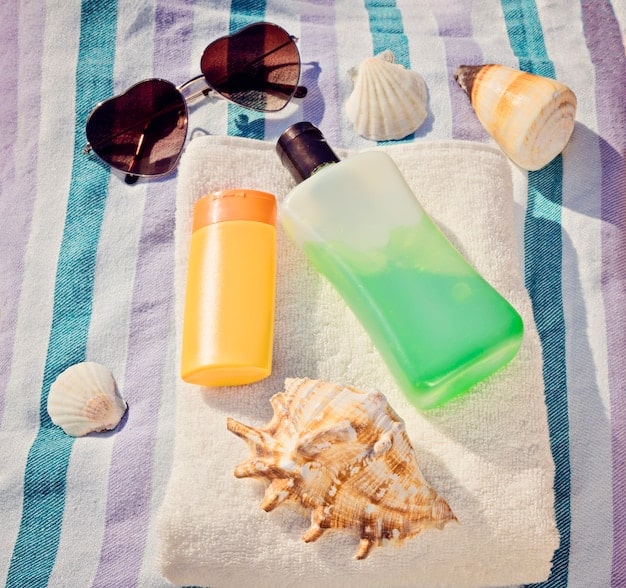
Understanding SPF and Broad-Spectrum Protection
When it comes to selecting a sunscreen, understanding SPF (Sun Protection Factor) and the term “broad-spectrum” is crucial to ensuring adequate protection against the sun’s harmful rays. Knowing the difference between these terms helps consumers to properly protect their face, and the rest of their skin.
SPF measures the sunscreen’s ability to protect against UVB rays, which are primarily responsible for sunburn. However, sunscreen should also protect against UVA rays, which contribute to premature aging and skin cancer. “Broad-spectrum” means the sunscreen protects against both UVA and UVB rays.
- SPF 30: Blocks approximately 97% of UVB rays.
- SPF 50: Blocks approximately 98% of UVB rays.
For maximum protection, choose a broad-spectrum sunscreen with an SPF of 30 or higher. Remember to apply it generously and reapply every two hours, especially after swimming or sweating. Sunscreen is to be applied regularly throughout the day, not just once in the morning.
Essential Product 5: Targeted Treatments
Depending on your specific skin concerns, you may want to incorporate targeted treatments into your routine. These could include serums with ingredients like vitamin C for brightening, retinol for anti-aging, or benzoyl peroxide for acne. Choose treatments that address your unique needs. This can be useful to supplement an everyday routine.
When introducing new treatments, start slowly and gradually increase frequency to avoid irritation. Always follow the product instructions and be patient; it can take several weeks to see noticeable results.
Common Skin Concerns and Targeted Treatments
Addressing specific skin concerns requires a targeted approach using specialized treatments. Understanding the underlying causes of these concerns is crucial for selecting the right products and achieving optimal results. There are various treatments for different skin and skin types.
Here are some common skin concerns and the targeted treatments that can help:
- Acne: Benzoyl peroxide, salicylic acid, retinoids.
- Hyperpigmentation (Dark Spots): Vitamin C, niacinamide, alpha hydroxy acids (AHAs).
- Fine Lines and Wrinkles: Retinol, peptides, hyaluronic acid.
When incorporating targeted treatments into your skincare routine, patch-test new products before applying them to your entire face. Start with a low concentration and gradually increase as tolerated. Patience is key when incorporating treatments.
| Key Point | Brief Description |
|---|---|
| 🧼 Cleanser | Removes dirt and oil, preventing clogged pores. |
| ✨ Exfoliant | Removes dead skin cells, revealing brighter skin. |
| 💧 Moisturizer | Hydrates the skin, keeping it supple and preventing dryness. |
| ☀️ Sunscreen | Protects from UV rays, preventing aging and skin cancer. |
Frequently Asked Questions
▼
Start with cleanser, then exfoliate. Next, apply any targeted treatments, followed by moisturizer, and finish with sunscreen during the day.
▼
Cleanse and moisturize daily. Exfoliate 1-3 times per week depending on your skin type. Apply sunscreen every morning.
▼
It depends. Consider your skin types first. If they’re vastly different, it’s best to use products tailored to your individual needs.
▼
Choose fragrance-free, hypoallergenic products. Patch-test new products and introduce them slowly to avoid irritation. Gentle products are a must.
▼
Results vary, but you should start to see improvements in a few weeks with consistent use. Patience and consistency are key.
Conclusion
By incorporating these five essential products into your daily routine, you can achieve healthy, clear, and radiant skin. Remember to choose products that are specifically formulated for your skin type and concerns, and be patient as you develop a routine that works for you. Consistency is the key to long-term success.



